Airplanes I've Worked On
I've gotten a broad view of the various aircraft out there today, and have been involved in the design or manufacture of many too. All photos are mine or public domain.
Commercial Aircraft
Boeing spares analysis
I got my first job doing statistical analysis of scrap rates of parts during landing gear overhauls (major maintenance events every 7-15 years). At the time, my company was lobbying Boeing for a license to sell parts to the aftermarket directly rather than through Boeing, so we wanted to understand which parts had the best combination of high replacement rates, low manufacturing cost, and high market price. This assignment also included my first business trip as I visited our overhaul facility in Florida to see the process firsthand and build the relationships I needed to get the data.
We ended up doing too good of a job: Boeing granted us the license, but then refused to renew it after the first term because we were taking too much of their spares business.
Boeing 737
I think the best part for us to license was the main landing gear lower bearing carrier. Later, I had to deal with global trade compliance issues because of the 737's military derivatives. 737s are notable because they don't have doors over the main landing gear wheels: the outer hubcaps are streamlined and big rubber flaps help seal up the bay when the gear is retracted. Look at an image of a 737's belly in-flight and you can still see the wheels underneath! The 737 also has very short landing gear; these made it easier to board passengers and load luggage, but this low ground clearance has caused headaches in fitting ever-larger engines to the 1960s-origin design.
Boeing 747
On that first spares-licensing project, I noticed that we had the VC-25 Air Force One 747 scheduled for overhaul at our facility!
Boeing 767
Also part of the spares licensing deal.
Boeing 777
The six-wheel main gear trucks (bogies if you're in Canada) are distinctive; only the A350-1000 has a similar configuration. When we closed our manufacturing facility in Cleveland, I was the project manager tasked with ensuring that the last 777 machining operations stood up successfully at the new site.
Aftermarket Financial Modeling
Bombardier CSeries / Airbus A220
Early in my career I specialized in aftermarket analysis, and I built the sales and profit forecast used in my company's CSeries proposal (we didn't win the contract). Much later, Bombardier sold the program to Airbus after they could no longer afford to finance the program bleeding cash.
Airbus A380
Airbus was a new-ish customer to us when I joined the company; we had previously been a Boeing house for large commercial landing gears. But consolidation in the landing gear industry had driven both Boeing and Airbus to shake up their existing relationships: they awarded us the the A380 and Boeing awarded the 787 to Safran. Because the contract with Airbus was structured differently, I was asked to model the aftermarket for the A380, and answer the question on whether it was better to sell large spares (at big markups) or instead encourage customers to come to our in-house repair shops for steadier income over time. Sadly, A380 production ended much faster than anyone expected and demand for some of those large sales could be fulfilled with salvaging the landing gears off retired A380s instead.
Bombardier CRJ 700 / 900 / 1000
The CRJ landing gear looks like like a tiny 737, down to the wheels not being covered by doors during flight. Unlike the 737, our contract scope with the CRJ included the full ATA-32 system including the control levers in the cockpit and various electronics and hydraulic boxes in the aircraft and hung on the landing gear.
Bombardier DHC-8 Q400
The CRJ series and DHC-8 were the first aircraft that I modeled for the aftermarket spares vs. repair question. For the few years of sales history we had on the newer types, it was hard to determine what spares sales were recurring (because operators kept needing replacements) and which were "initial provisioning": operators were stocking up their warehouses so that they would be ready to replace failed parts quickly and get their airplanes flying again. The more of our sales were initial provisioning, the less we expected in recurring sales over thirty years, so the model was very sensitive to those assumptions.
I also made a poor choice in how I presented the data: I graphed the "net benefit" of repairs vs. spares over time, so a positive result implied that it was better to encourage repairs, and a negative result was that it was better to sell spares. Where the line crossed the axis was when the two models broke even, so if you knew your desired planning horizon you could figure out which model was better. When I presented the charts, it quickly became clear that they were unintuitive and didn't present the information management needed. Now, I would have replaced that one line with four: cumulative profit and net present value of that profit for each of the two models, so it would be obvious where the cut-over point was and how big the opportunity was under each scenario.
At the time, the Q400 was expected to do very well thanks to $100+/barrel oil prices; we expected production rates to rise to 50-60 aircraft per year. Actual production rates were more like a dozen per year. The DHC-8 also has a very long main landing gear (mounted to the high wing) and an "upside-down" nose landing gear with the shock absorber cylinder underneath the piston rather than on top of it.
Also, I'm pretty confident that Randall Monroe drew a DHC-8 in xkcd 1669 "Planespotting".
Gulfstream G650
The G650 was just entering service when I joined. I did aftermarket modeling for it differently: Gulfstream maintained control over the spares (like Boeing Commercial), but they gave us a bigger slice of their markups.
COMAC C919
In the late aughts, we looked into providing landing gear for the COMAC C919 via a joint-venture where we would also produce some of our 737 landing gears in China. The intent was low-cost manufacturing to make us more competitive for the A320 and 737 replacements. The JV didn't happen for a lot of good reasons, but the joke was on us anyway: nearly 20 years later and neither Airbus nor Boeing plans to replace their narrow-body airliners yet. I had bet on entry into service no later than 2025 (and thought I was being pessimistic). Oops!
Military Aircraft
Military spares
Grumman S-2 Tracker
I spent some time quoting out-of-production military spares to support various proposals to our customers. One painful experience was a proposal to Taiwan to replace the landing gear on their S-2 Tracker antisubmarine aircraft. Working with Engineering and Document Control, we had the half-century-old blueprints scanned and pulled all of the associated (and obsolete) specifications. Luckily for everyone involved, the Taiwan government instead purchased some US Navy-surplus P-3 Orions and retired the Trackers. Resurrecting a program that old would have led to years of production difficulties. Here's a photo of me five years later at the USS Yorktown Museum, still bearing a grudge.
| An S-2 Tracker in 2016 on the USS Yorktown CV-10 in Charleston, SC |
Boeing B-2 Spirit
While I was working out-of-production military spares, we would also get requests for quote for B-2 parts. The B-2 had the misfortune of entering into service as the Cold War ended, so its intended 132-bomber production run dropped to just over 20. Because of the steep prices that vendors would demand for single-piece orders, we would often propose minimum order quantities; on the B-2 those minimum quantities were often enough to replace the part for every aircraft in the fleet! Thanks to accidents, in 2024 only 19 B-2s were in service, and between decoys and the strike package we used nearly all of them (16-17, and maybe two were down for maintenance?) for the strike on Iran in June 2025.
Work Transfers
The company chose to close its Cleveland manufacturing facility in 2012-2013, and I was on the "manufacturing integration" team charged with ensuring that we could make parts at the new facilities before we ran out of Cleveland-manufactured parts.
Boeing F/A-18E/F/G Super Hornet family
Knowing the difference between the "Hornet" and the "Super Hornet" helped get me my first job. I'd told the hiring manager RF that I could sight almost any modern military aircraft, so he gestured to the pictures in his office. I quickly named two of them as an F-35 and an F-22, but to show my expertise, I pointed out that the F/A-18 was a Super Hornet, and you could tell by the shape of the air intakes. His jaw dropped.
The F/A-18 was a Navy derivative of Northrop's YF-17 entry to the US Air Force's "lightweight fighter" contest, later won by the F-16. The F/A-18A through D variants served in Navy and Marine air wings (as well as for other countries) with success, and when the Navy retired the A-6 Intruder, EA-6B Prowler, and F-14 Tomcat, Boeing successfully sold the F/A-18E/F Super Hornet and EA-18G Growler as low-risk replacements.
The F/A-18 was the first landing gear to be assembled in our new Fort Worth facility, and I was the Project Manager tasked with getting all of the parts and people onsite to make it happen. With the exception of a necessary part being shipped to Puerto Rico (FedEx's fault), it went smoothly.
The F/A-18 also was the reason that my specific job existed: early in the work-transfer project the company only had "sending" and "receiving" teams from each production site, but no one was looking at program in its entirety. The F/A-18 had unusual requirements during manufacture that dictated custom-sized bushings for every single large part, so either the new machining shop or the new assembly shop needed the ability to machine and plate bushings on-demand. Both sites thought the other one had that in-scope, so after that costly mistake was discovered I and three other project managers were hired to avoid similar oversights.
 |
| Me and an EA-18G Growler at the Cleveland National Air Show 2010 |
Lockheed-Martin F-16 Fighting Falcon
The F-16 was both the last landing gear that I managed into the Fort Worth site and also my first job as a Program Manager. The previous Program Manager DB was laid off and senior management had assured my boss MH that they had a plan for supporting the F-16. They didn't: a month or so later I was asked to serve as both work transfer Project Manager and also the Program Manager.
At my first customer meeting with Lockheed-Martin, I walked in to happily announce that we would be ready to deliver well ahead of our contract date. They informed me that the contract date would stop their production line for three months: we had negotiated a contract date which respected my company's lead time, but they expected a "best effort" to avoid stopping their line. No one at my company had told me (maybe no one knew?). A few round-trips to our production facility in Poland later, I was on-site at Fort Worth watching the first F-16 gears being assembled and Lockheed's line never stopped.
Boeing F-15 Eagle
The F-15 work transfer was midway through the Fort Worth startup, but a botched supply-chain work transfer had put us in the position of not having enough large structural parts. The team had changed to a new lower-cost supplier, but the "buffer" inventory from the incumbent ran out before the new supplier was able to deliver compliant parts. Supply Chain had failed to monitor the status of the buffer stock and so had to go back to the incumbent in desperation. Eventually we got good parts out of the new supplier around the same time that the incumbent delivered (at a "my customer is desperate" price).
Lockheed-Martin F-22 Raptor
During the Cleveland plant closure, we had an order from Lockheed Martin for spare F-22 nose landing gears. The plan had been to assemble and deliver them out of Cleveland before it shut, but some key parts weren't going to deliver before our deadline. Because we were going to move the overhaul and repair responsibilities to Miami, we decided to move the spare assembly there too.
It ended up being a nightmare: we needed contract modifications for the "deliver from" location, the customer had to be convinced that Miami's AS9110 certification was acceptable for production work (rather than AS9100), and worst of all we had just enough of the parts in Cleveland so we couldn't afford to misplace any parts or tools in the move.
We found a Cleveland assembler who was willing to come back as a (well-paid) contractor to advise on the build, and we did eventually deliver all of the spares to the customer.
Lockheed-Martin F-35 Lightning II
My company manufactured three unique landing gear sets for the F-35. The airplane's three main variants are distinguished by how they take off and land: conventional runway (CTOL, Air Force), short takeoff / vertical landing (STOVL, Marines and Royal Navy, and aircraft carrier catapult launch and arrested landing (CATOBAR or CV, Navy). If CTOL is the "normal" landing gear, STOVL is lighter (titanium vs. steel) because of how weight-sensitive STOVL capabilities are, and CV is extra-strong and uses the Navy's preferred landing gear steel.
With the Cleveland closure, machining, heat-treat, and surface-treatment processes all had to move to new locations, not just assembly. Two variants stayed in the US, but the six main structural components (shock strut pistons and cylinders for nose, left, and right gears) on the CTOL gear changed moved to a new site in Poland. A Project Manager was assigned full-time to F-35, but after he got caught in a layoff the rest of the team had to pick up the slack. I helped expedite the project through the finish line.
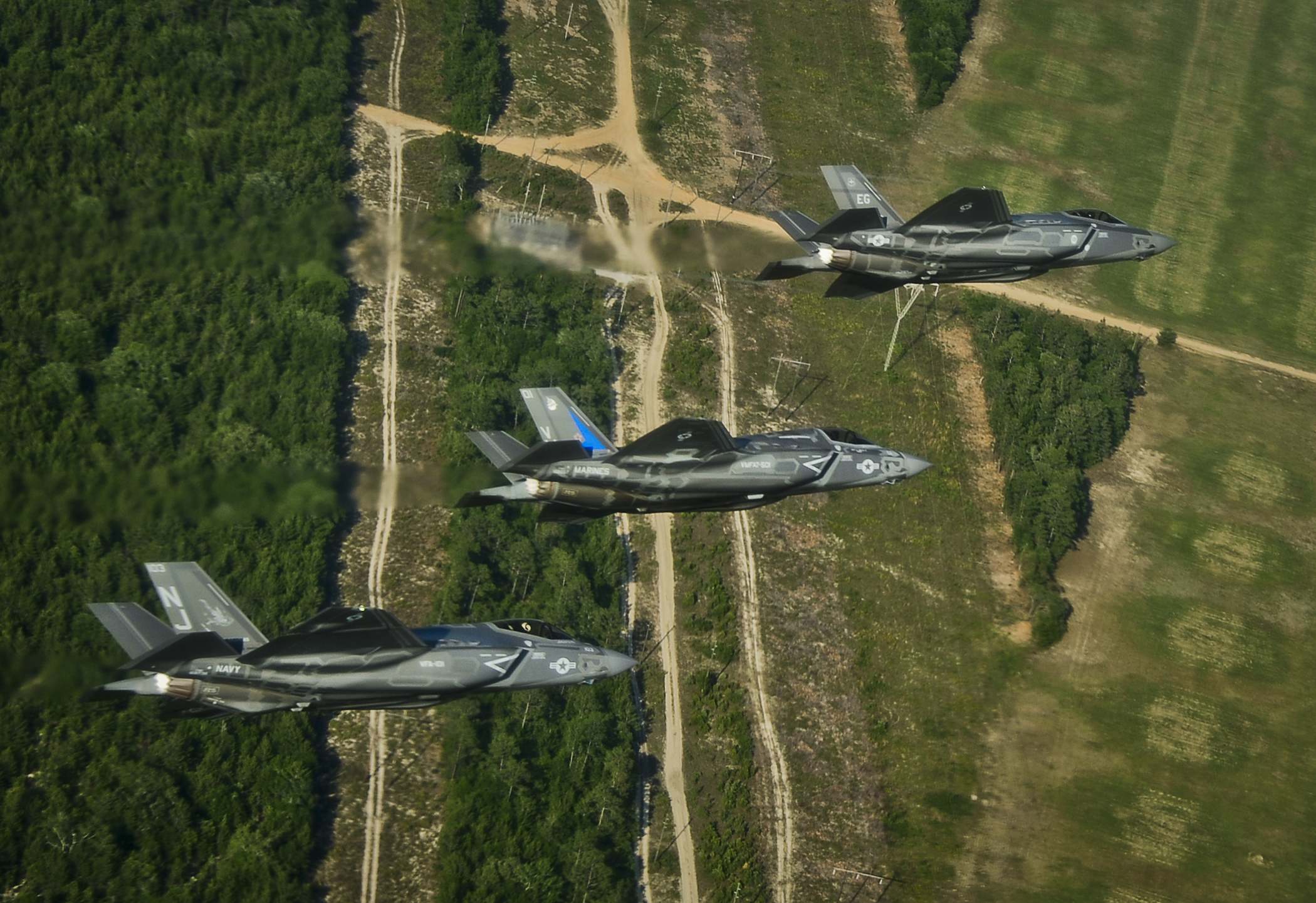 |
| From top to bottom: F-35A (CTOL), B (STOVL), and C (CV) |
Sikorsky SH-60B / MH-60R Seahawk
A naval variant of the UH-60 / S-70 Blackhawk, the SH-60B (later updated to the MH-60R) includes a folding tail boom to make it more compact for use on ships. This required a custom landing gear moved from the tail boom to the main fuselage. Cleveland assembled this gear but then assembly was moved to an outside supplier.
The actual work transfer went pretty smoothly, but soon thereafter I was assigned the program as a Program Manager. That's when I learned that Sikorsky was returning a large proportion of our landing gears as defective, rescinding their payments, and demanding replacements. It turned out that the landing gears were shipped with wheels and tires installed (per contract), but the tires were deflated for safety during transit. At the Sikorsky line they were pulling the gears out of the box, installing them under helicopters, and then going weight-on-wheels without inflating the tires, which predictably led to a lot of broken valve stems that they then blamed on us.
 |
| The SH-60B is the helicopter on the far right. 2019 USS Midway CV-41 in San Diego, CA |
Boeing C-17 Globemaster III
The C-17 had its own work-transfer project manager, but shortly after the first articles were delivered out of the new Tennessee site, they struggled with continuing deliveries and were stopping the line at Boeing. My manager asked me to go onsite to help: four months of "go home every other weekend". I had my first experience with how volatile relationships between the union and site management could be and witnessed some heroic fixes and embarrassing failures.
The C-17 has one of the odder-shaped landing gears in order to fit in a tight bay, carry a heavy load, and support rough-field operations. See the video here for the tortured shape and retract sequence.
Lockheed-Martin C-5 Galaxy
The C-5 was long out-of-production when I joined the company, but we were manufacturing new structural beams for the landing gear to extend the life of the aircraft. We were literally the last place in the world with the welding capability necessary. The contract formed a significant fraction of Cleveland's demand for machining hours, and its end was one of the reasons Cleveland looked underused.
The C-5 also has a funny landing gear sequence that includes the wheels rotating 90 degrees as part of the retraction.
New Product Introduction
Prototypes
As Program Manager and later Senior Program Manager for New Military Product, I was involved in several proposals for prototypes or small-run aircraft. Often, the customer would not want to disclose the end-use of the landing gear, sometimes even refusing to acknowledge that the landing gear was going to be installed in an aircraft! So we limited our speculation, avoided distributing what little information we had, and made it happen. In a few cases that meant new manufacturing of modified legacy aircraft like F-22s or, in one memorable instance, F-4s. The photo below was my own looking at an F-4 on the USS Midway museum ship in San Diego, CA. We'd been struggling with sourcing and manufacture so I took a few photos to help guide us on how things were done 60 years prior.
 | ||
| F-4 Phantom nose landing gear on the 2019 USS Midway CV-41 in San Diego, CA |
MQ-25 Stingray
The MQ-25 program had a twisty history, starting with the "Unmanned Combat Air System - Demonstration" (UCAS-D) program by the US Navy (itself spun off from a joint UCAS project). Some scope-reduction later, requirements emerged for the "Unmanned Carrier-Launched Airborne Surveillance and Strike" program which was intended to give the Navy a long-range scout drone which could also drop bombs or missiles on occasion. With four major defense primes (Boeing, Lockheed-Martin, Northrop-Grumman, and General Atomics) all having assembled proposals for the contract, the Navy down-scoped its requirements again to the "Carrier-Based Aerial-Refueling System" (CBARS) which was eventually awarded to Boeing as the MQ-25.
My company's landing gear group worked with every prime contractor...except Boeing. Oops! We'd spend the most time with General Atomics because they had the least large-aircraft and aircraft-carrier experience, and I have fond memories of the work. They had maintained a lot of the "tinkering in their garage" feel to their innovation that I didn't see much at other large companies.
The way I remember the General Atomics folks telling the story of the UCLASS-to-CBARS change, during UCLASS they went to the Navy and said "One of our competitive advantages is that we can carry a lot of fuel far from the carrier, how about you stop putting lots of hours on those F/A-18s with 'buddy stores' and have us refuel you instead?" Well, range had become a critical problem for the Navy, so they decided that having a refueler (that might be able to carry sensors or weapons with later upgrades) was a much more effective force-multiplier than yet another strike aircraft and went from UCLASS to CBARS.
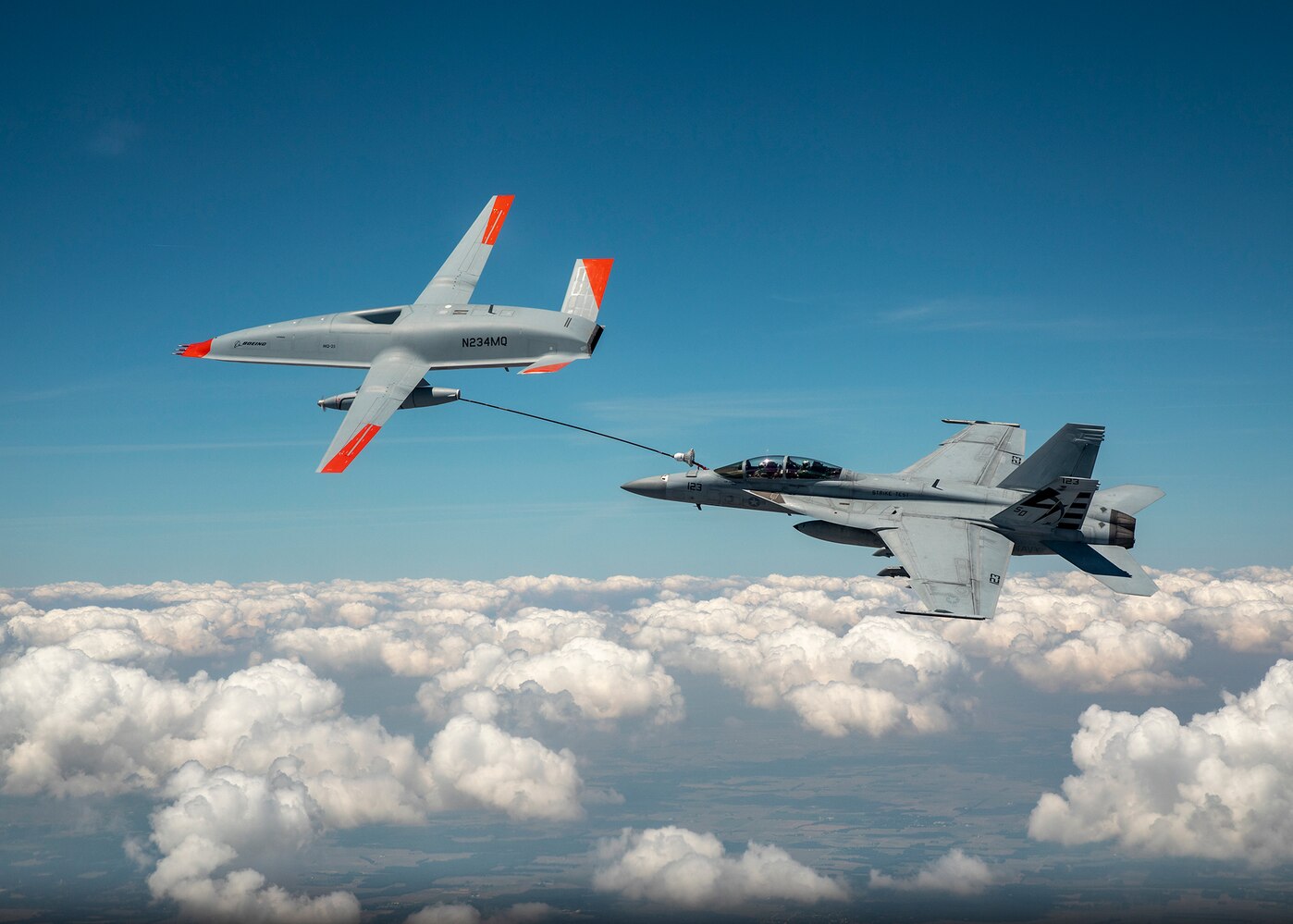 |
| Boeing MQ-25 because that's the one with images in the public domain |
Boeing T-7 Red Hawk
Similarly to the MQ-25, we worked with several prime contractors for their T-X (later designated T-7) trainer proposals. Because of the US Air Force's urgent need for trainers to replace the T-38, we had to prepare an extremely aggressive development schedule for our customers. Because I had built a double-digit number of "Integrated Master Schedules" (IMS) for various new programs' proposals and was executing against at least two at the time, I was charged with developing our T-X schedule. I had my fears on whether we would actually perform the various time-saving tasks we were committing to (new test stands, lots of internal manufacturing for first builds), but I documented every assumption that I thought was risky, had several frank conversations with senior management on the schedule risks, and eventually turned it over to the proposal team. And hey, the landing gear isn't why the T-7 is delivering late!













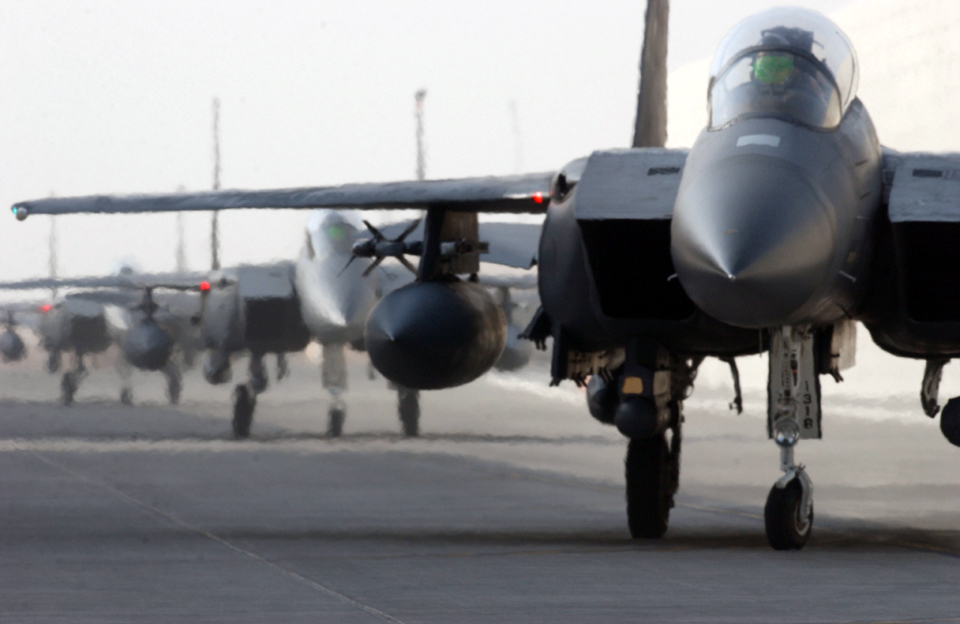
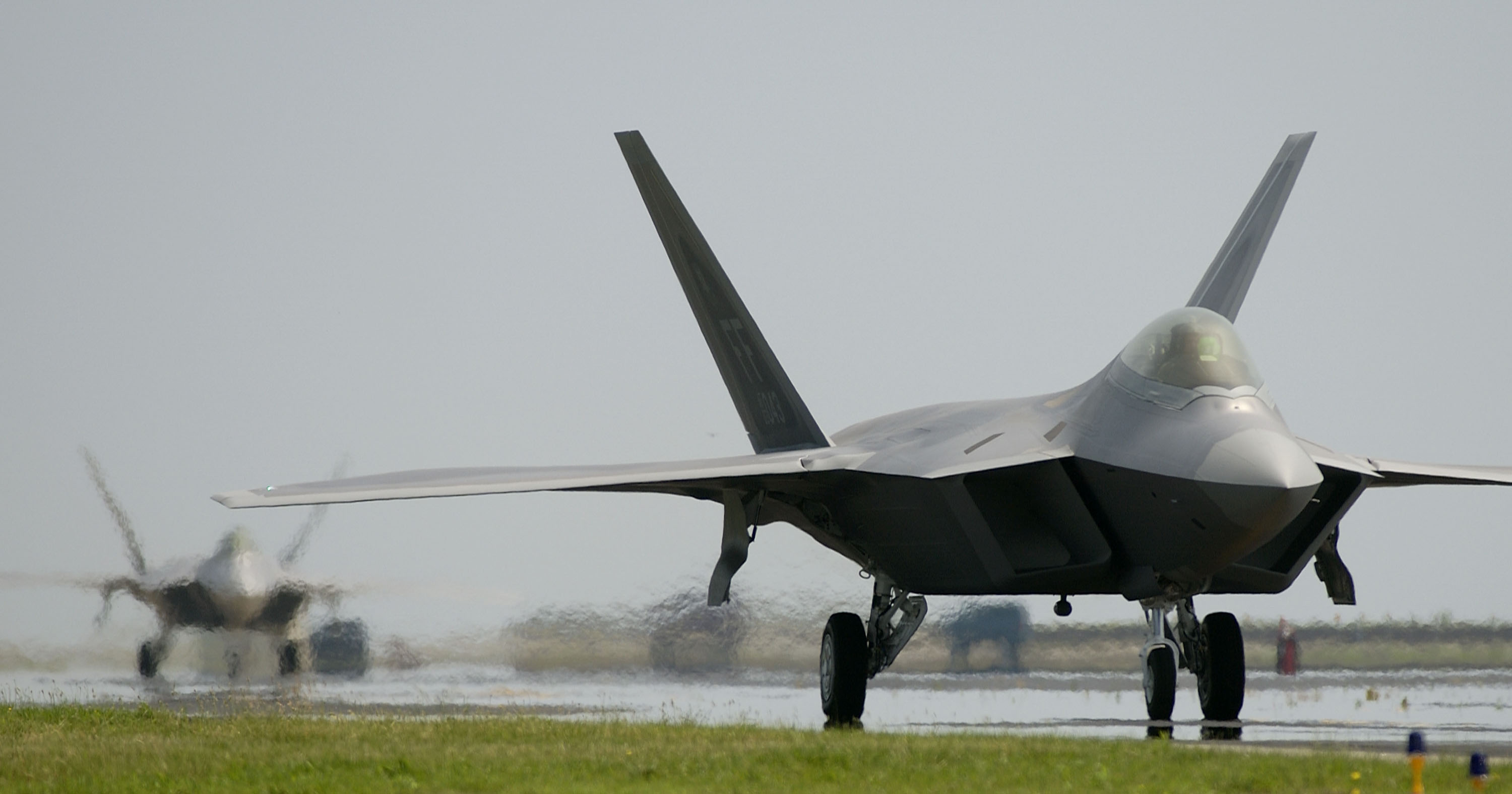

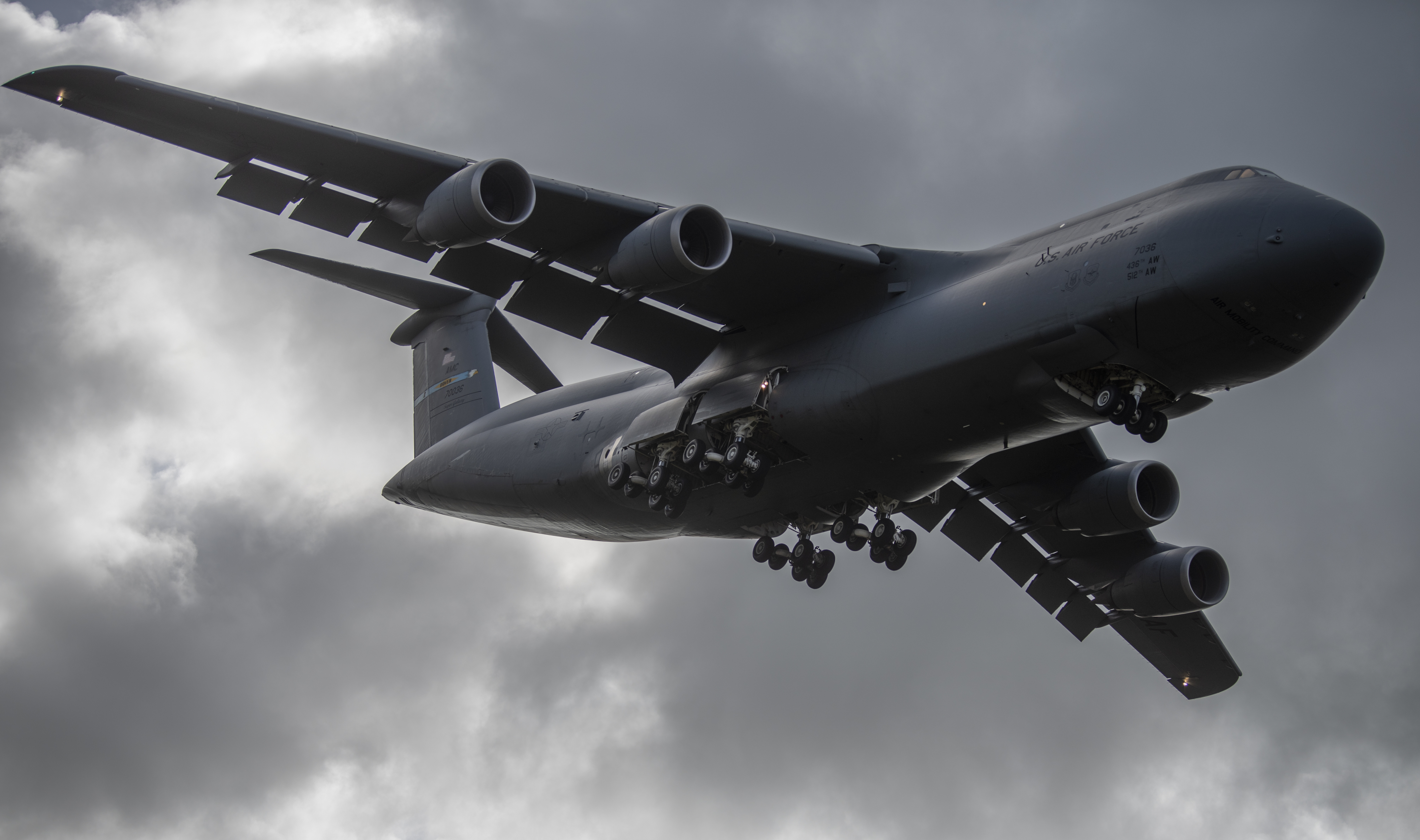
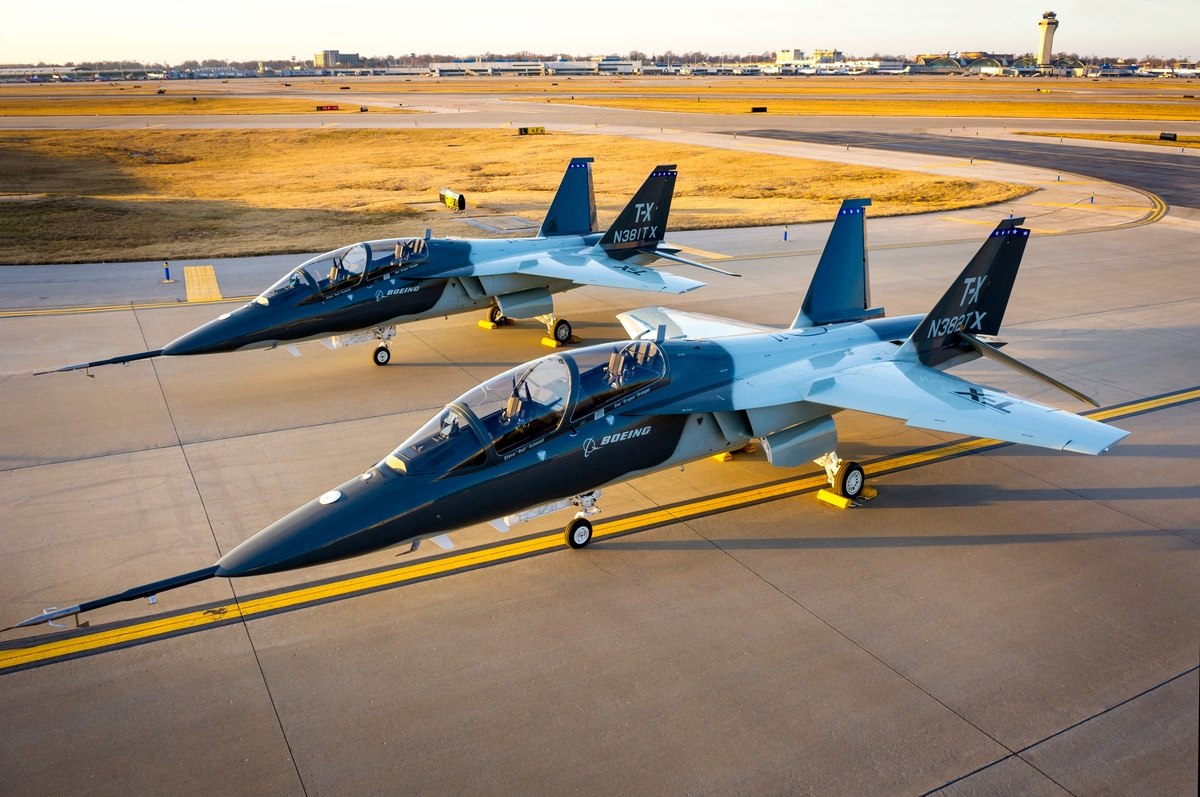
Comments
Post a Comment